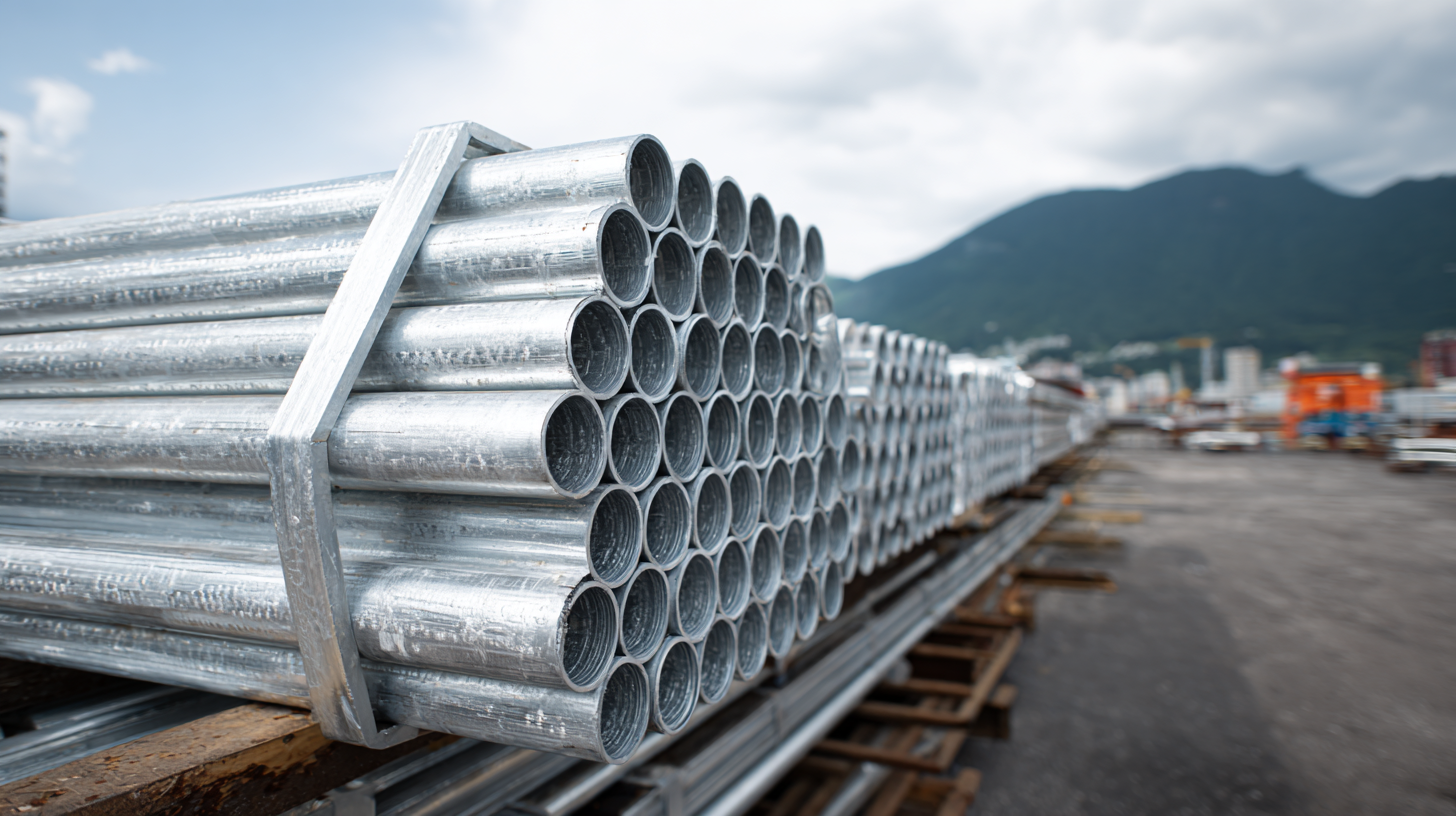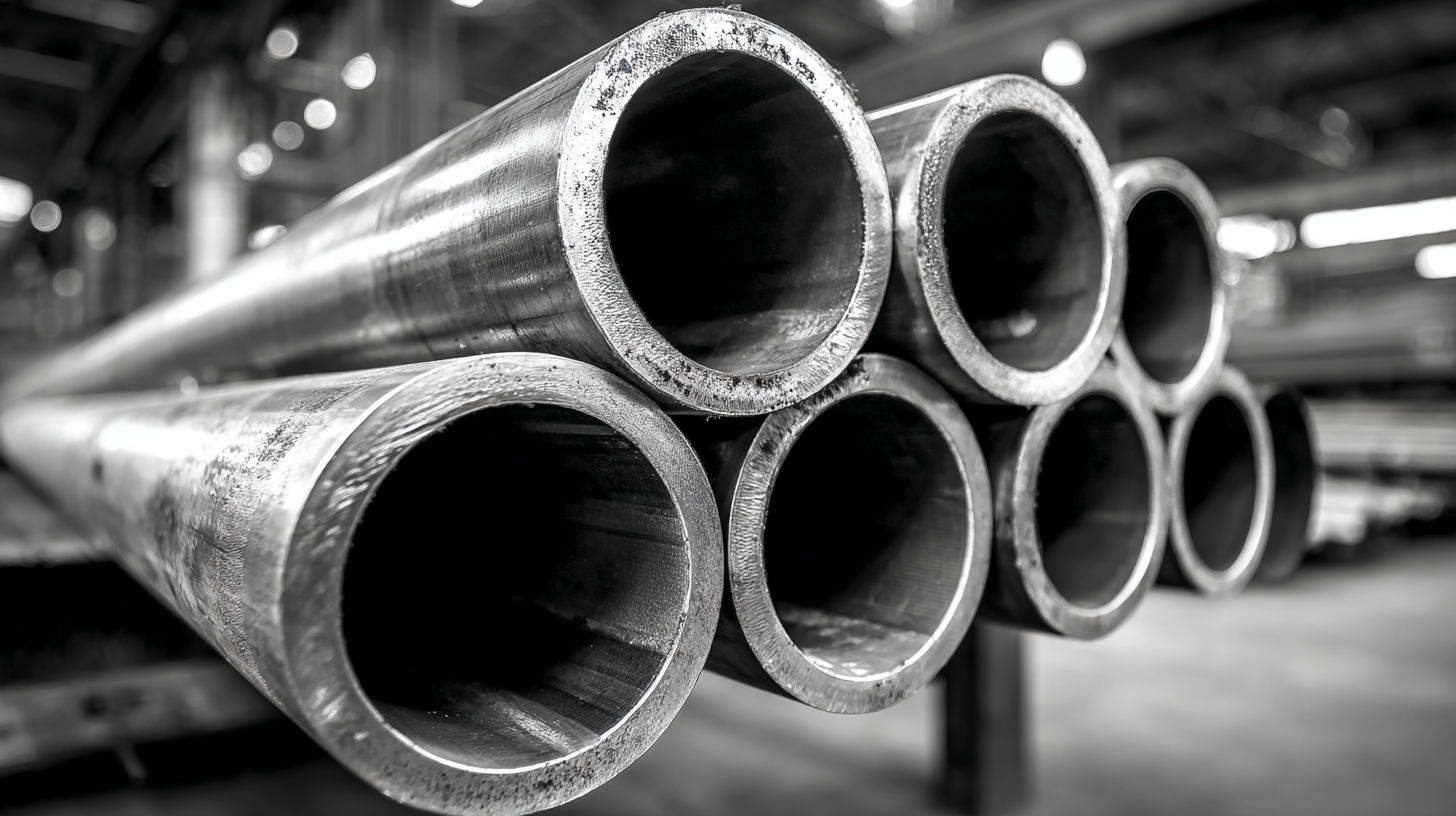In the construction and maintenance industries, the use of Aluminum Scaffolding Pipe has seen a remarkable surge due to its lightweight, durability, and corrosion resistance, making it an ideal choice for various applications. According to a recent market research report, the global scaffolding market is projected to reach $72 billion by 2025, with aluminum scaffolding accounting for a significant share thanks to its favorable properties over traditional materials. However, navigating the complexities of import certification for these materials can be daunting. Companies must not only ensure compliance with international standards but also consider the advantages of after-sales service and maintenance costs that can significantly impact their bottom line. Understanding these elements can help businesses leverage the best Aluminum Scaffolding Pipe available on the market, ensuring both safety and efficiency in their operations.

When it comes to importing aluminum scaffolding pipes, understanding the import certification requirements is crucial. One of the latest developments is the New Indian Regulation on BIS Certification for Aluminum and Aluminum Alloys in 2023. Under this regulation, products made of aluminum, alongside similar materials, are now mandated to obtain BIS Certification in order to be approved for import and trade in India. This requirement ensures that all imported products meet specific quality and safety standards, essential for both suppliers and users in the construction industry.
To navigate the certification process effectively, here are some tips: First, familiarize yourself with the documentation required for BIS Certification, including test reports and compliance sheets, to streamline the application process. Second, engage with a local certification body that can guide you through the proceedings and clarify any industry-specific regulations that may apply. Lastly, ensure that your suppliers are compliant with these new regulations before proceeding with imports, as non-compliance can lead to delays or penalties.
Being proactive in understanding and adhering to these import certification requirements not only simplifies the process but also enhances the trustworthiness of your products in the competitive market.
| Country | Import Certification Authority | Certification Requirements | Documentation Needed | Processing Time |
|---|---|---|---|---|
| USA | OSHA | Safety checks, load ratings | Test reports, installation manuals | 2-4 weeks |
| Germany | TÜV | European safety standards | CE marking, user manuals | 3-6 weeks |
| Australia | Standards Australia | AS/NZS standards compliance | Inspection reports, compliance certificates | 4-8 weeks |
| Canada | CSA Group | National safety codes | Certification documents, design specifications | 3-5 weeks |
| Japan | JIS | Japanese Industrial Standards | Technical drawings, safety evaluations | 2-4 weeks |
When it comes to aluminum scaffolding, quality standards play a crucial role in ensuring safety and durability. Chinese manufacturers have established a strong reputation in this sector, largely due to their adherence to rigorous quality control processes. These processes often align with international standards, which not only ensures that the scaffolding pipes can withstand heavy loads but also that they meet safety regulations across various global markets.
Additionally, the manufacturing advantage in China is not just about the standards, but also about the technology and innovation employed in the production of aluminum scaffolding pipes. Many Chinese producers utilize advanced manufacturing techniques and materials that enhance the strength and corrosion resistance of their products. This means that contractors and builders can trust the durability and reliability of these scaffolding solutions, making Chinese aluminum scaffolding a preferred choice for projects around the world.
As global demand for high-quality scaffolding continues to rise, understanding these quality standards is essential for navigating import certification successfully.
Navigating the global market for aluminum scaffolding export requires a keen understanding of international standards and regulations. The demand for lightweight, durable scaffolding solutions continues to rise in various construction sectors across the globe. However, to successfully enter international markets, exporters must comply with rigorous import certification requirements that vary by country. This involves ensuring that the scaffolding products meet safety and quality standards that are often enforced by local regulations. Engaging with local authorities and understanding the certification processes are crucial steps to avoid costly delays and improve market entry success.

Moreover, building strong relationships with international distributors can enhance market presence. Networking at trade shows and industry events allows exporters to connect with potential partners and gain insights into regional preferences and compliance practices. Utilizing platforms that facilitate B2B connections can also streamline the export process. Investing in market research and cultural understanding will not only help in navigating the complexities of international trade but also in establishing a brand reputation that resonates with various client bases worldwide. As aluminum scaffolding becomes a preferred choice for many construction projects, exporters must be proactive in adapting to the evolving landscape of global commerce.
Navigating import certification for aluminum scaffolding pipes requires a keen understanding of global compliance regulations. With the scaffolding market projected to reach $4.5 billion by 2025, ensuring your products meet international standards is crucial. Different countries have varying import regulations, and familiarity with these can save time and cut costs. For example, the U.S. mandates compliance with OSHA standards, while the EU enforces EN 12810 and EN 12811 guidelines.
**Tip:** Regularly check the latest updates on compliance requirements, as these can change frequently based on safety evaluations and trade agreements. Utilizing resources from industry bodies like the International Organization for Standardization (ISO) can provide valuable insights into the necessary certifications for different regions.
Furthermore, engage a customs broker who specializes in scaffolding materials. They can guide you through the precise documentation required in each jurisdiction. Proper documentation not only expedites the import process but also mitigates the risk of incurring penalties due to non-compliance.
**Tip:** Conduct a risk assessment of your supply chain to identify potential compliance pitfalls. By proactively addressing these areas, you can streamline your operations and maintain competitive pricing in the global market.

When selecting reliable suppliers of aluminum scaffolding pipes, it is essential to consider various factors that contribute to the quality and safety of the products. According to a recent report by Grand View Research, the global scaffolding market is expected to reach USD 70.8 billion by 2027, indicating a growing demand for high-quality scaffolding materials. In this competitive environment, suppliers who adhere to international standards, such as those set by the American National Standards Institute (ANSI) and the Occupational Safety and Health Administration (OSHA), should be prioritized. Compliance with such regulations ensures that the products meet safety and durability expectations, reducing the risks associated with construction work.
Additionally, assessing a supplier’s reputation and history in the market is crucial. A study published in the International Journal of Project Management highlights that approximately 30% of construction accidents are linked to inadequate scaffolding practices. Therefore, partnering with suppliers who demonstrate a commitment to quality assurance and customer feedback can mitigate potential project pitfalls. It's recommended to request third-party certificates, such as ISO certification, which can provide an added layer of assurance regarding the supplier's manufacturing processes and material quality.
By focusing on these best practices, businesses can ensure they are sourcing aluminum scaffolding pipes from trustworthy suppliers who prioritize safety and performance.
